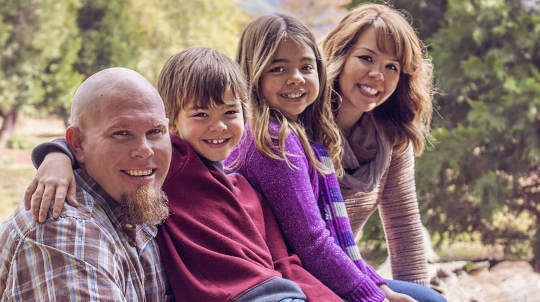
Part of the reward of becoming an agent of compassionate, life-affirming change, whether or not you get public acknowledgment, is the knowledge you are doing measurable good. There is nothing theoretical about your gift as an agent of change. It may usually be anonymous, but the contribution is quite real.
Research shows that the spread of happiness can be objectively measured and quantified. This work also begins to explain exactly what one needs to do to cause happiness to spread and what the social outcomes are of doing so.
There actually is a database of international research on happiness: the World Happiness Report. Published by the Sustainable Development Solutions Network (SDSN), the first World Happiness Report was published in April 2012. The latest was released April 23, 2015.
How Can We Measure Happiness?
To create the survey, teams of researchers review country by country survey data on well-being, including a ranking of national average life evaluations, based on Gallup World Poll data. But they place particular emphasis on each individual’s subjective evaluation of a series of questions rising from how much freedom a person feels they have to choose their own path, to how they donated to charity. They ask: “Taking all things together, would you say you are: very happy, quite happy, not very happy, or not at all happy?” They seek this subjective data because they “attach fundamental importance to the evaluations that people make of their own lives. This gives them a reality and power that no expert-constructed index could ever have.”
The “Happiness” statistic is obtained using a formula: the percentage of people who rated themselves as either “quite happy” or “very happy” minus the percentage of people who rated themselves as either “not very happy” or “not at all happy.”
The research not only measures happiness, but it also studies what makes people happy. As the Harvard Medical School’s HEALTHbeat explained it, “People tend to be poor judges of what will make them happy. While most people say they want to be happy, they often believe in myths or carry assumptions that actually get in the way.”
Factors that, it may surprise you, don’t produce happiness are money and material things (your mother was right), youth and physical attractiveness, and children.
The Harvard group explains:
The question of whether money can buy happiness has, for more than 30 years, been addressed by the “Easterlin paradox,” a concept developed by economist Richard Easterlin. His research showed that people in poor countries are happier when their basic necessities are covered. But any money beyond that doesn’t make much difference in happiness level.
5 Things That Contribute to Happiness
The Harvard team does, however, list five things that contribute to happiness:
(1) when you do something, commit yourself fully and “lose awareness of time”;
(2) whatever you do, give yourself over to it so that “you aren’t thinking of yourself”;
(3) as you are doing whatever it is you do that makes you feel happy, do it in a manner so you “aren’t interrupted by extraneous thoughts while you are doing it”;
(4) be proactive in your life, not passive; and
(5) although the work may be hard and demanding, work at it effortlessly because you believe in what you are doing.
If you can do that, you are “in the flow,” and that will lead to happiness. Life-affirming choices create happiness and happiness is contagious.
Emotional Contagion: When You're Happy, Others Become Happy
Nicholas A. Christakis, a medical sociologist at Harvard University who has been a leader in this research area, says:
One determinant of our own happiness that has not received the attention it deserves is the happiness of others. Yet we know that emotions can spread over short periods of time from person to person, in a process known as “emotional contagion.” If someone smiles at you, it is instinctive to smile back. If your partner or roommate is depressed, it is common for you to become depressed.
Although we may believe that our emotional state is the result of our choices and actions and experiences, researchers have found it also depends on the choices and actions and experiences of other people, including people to whom you are not directly connected. Christakis and his research partner James Fowler say it explicitly: “Happiness is contagious.”
In their study, 4,739 people were followed over two decades. Like all good longitudinal studies, those years mellowed the research data like a good wine, giving it gravitas. Christakis and his colleagues discovered that if you are happy or become happy you increase the probability that someone you know will be happy just through a casual interaction with you.
Happiness and the Third Degree of Separation
Even more surprising, the Harvard researchers found that this capacity to create happiness could extend to the third degree of separation. And it can even be translated into real-world economics. “Our work shows that whether a friend’s friend is happy has more influence than a $5,000 raise,” says Christakis.
Christakis and Fowler report:
Clusters of happy and unhappy people are visible in the network, and the relationship between people’s happiness extends up to three degrees of separation (for example, to the friends of one’s friends’ friends). People who are surrounded by many happy people and those who are central in the network are more likely to become happy in the future.
Longitudinal statistical models suggest that clusters of happiness result from the spread of happiness and not just a tendency for people to associate with similar individuals. A friend who lives within a mile (about 1.6 km) and who becomes happy increases the probability that a person is happy by 25 percent (95 percent confidence interval 1 percent to 57 percent). Similar effects are seen in co-resident spouses (8 percent, 0.2 percent to 16 percent), siblings who live within a mile (14 percent, 1 percent to 28 percent), and next door neighbors (34 percent, 7 percent to 70 percent). Effects are not seen between coworkers. The effect decays with time and with geographical separation.
This is why compassionate, life-affirming choices cumulatively create wellness and why wellness and happiness are linked, both being collective phenomena. And it’s why agents of change, like Douglas Dean, the unknown Nobel Peace Prize recipient, could quite sincerely report feeling a sense of reward even though he received little public acknowledgment of what he had done. This is the basis for the Third Law,
The individuals in the group must accept that their goals may not be reached in their lifetimes and be okay with this,
and the Fourth Law,
The individuals in the group must accept that they may not get either credit or acknowledgment for what they have done and be authentically okay with this.
Sing Along and Get Healthy and Happy
Psychologist Martin E. P. Seligman of the University of Pennsylvania, commenting on Christakis and Fowler’s work, made as clear a statement of the nonlocal linkage process in the social context as any I could make—although he may not see it that way—saying,
“Laughter and singing and smiling tune the group emotionally. They get them on the same wavelength so they can work together more effectively as a group.”
I would only add that ritual ceremony using music or dance is the technique of choice the world over for creating nonlocal, linked, shared intention. It matters that we understand, far better than we do, how these linkages occur and how to neutralize or enhance them.
And finally, we are beginning to see actual research showing that making choices that create happiness makes you healthier. One aspect of the individual mind-body linkage is that “a happy heart just might be a healthier one.”
Between 2002 and 2004, Andrew Steptoe, a physician at University College London, led a team that studied whether “positive affective states are associated with favorable health outcomes.” A population of 2,873 healthy British men and women between the ages of fifty and seventy-four participated.
Reporter Amy Norton of Reuters asked Steptoe what his findings suggested. He replied, “These findings suggest another biological process linking happiness with reduced biological vulnerability.”
When she asked, “But if happier people are healthier people, the more difficult question remains: How do you become happier?” he answered, “What we do know is that people’s mood states are not just a matter of heredity, but depend on our social relationships and fulfillment in life. We need to help people to recognize the things that make them feel good and truly satisfied with their lives, so that they spend more time doing these things.”
Love is Wanting Others to Be Happy
In Buddhism there are four “immeasurables” that must be understood and integrated into one’s being for true happiness and spiritual growth to occur: love, compassion, joy, and equanimity. To a sincere Buddhist, the definition of love is “wanting others to be happy.”
In Matthew 22:37–40, Jesus makes essentially the same statement.
You shall love the Lord your God with all your heart, and with all your soul, and with all your mind. This is the great and foremost commandment. And a second is like it: You shall love your neighbor as yourself. On these two commandments depend the whole Law and the Prophets.
These sentiments are echoed in most of the other great spiritual traditions. The ethnohistorical record is very clear about linking happiness, wellbeing, and love; and all these paths to self-awareness, enlightenment, if you will, acknowledge both the local and nonlocal aspects of these processes.
Life, Liberty, and the Pursuit of Happiness
The founders understood the importance of happiness and wrote it into the Declaration of Independence, “Life, Liberty, and the pursuit of Happiness,” by which they did not mean frivolity and self-indulgence. They meant much more what Franklin meant when he used the term virtuous citizen. And the founders were right to place such importance on happiness.
Perhaps it is a measure of how far we have strayed from what they had hoped, for in the United States we are not very happy.
In the 2015 report of the 158 nations examined, the top 10 and bottom 10 nations are:
-
HappiestLeast Happy
1 Switzerland 149 Chad 2 Iceland 150 Guinea 3 Denmark 151 Ivory Coast 4 Norway 152 Burkina Faso 5 Canada 153 Afghanistan 6 Finland 154 Rwanda 7 Netherlands 155 Benin 8 Sweden 156 Syria 9 New Zealand 157 Burundi 10 Australia 158 Togo
Fig. 15.1. World Happiness Report 2015
The bottom ranks are not surprising. It is made up of failed or failing states riven by war and corruption, hunger and disease.
But why are certain countries at the top of the list, year after year? That seems to me the important question. It certainly isn’t just wealth or power. Neither the United States (15th), nor the U.K. (21st), comes out as very happy, although very rich and militarily powerful.
Why Are Certain Countries Happier?
The really important insight to be derived from this survey, in my view, is that the Scandinavian countries are overwhelming at the pinnacle of the happiness list, year after year. It is a distinction that should give one pause to ask: What do these countries have in common?
The answer is that of the options available these countries as societies most consistently choose the one that is the most compassionate and life-affirming, the one with wellness as a first priority. And they score at the top of the list year after year as a result.
People who live there feel happy. They can live without fear, give their children a decent start, provide them with a good education, live without fear about health care or its cost. People in those countries know that they will be okay in their old age. Imagine living like that.
©2015 by Stephan A. Schwartz.
Reprinted with permission of the publisher, Park Street Press,
an imprint of Inner Traditions Inc. www.innertraditions.com
Article Source:
 The 8 Laws of Change: How to Be an Agent of Personal and Social Transformation
The 8 Laws of Change: How to Be an Agent of Personal and Social Transformation
by Stephan A. Schwartz.
Click here for more info and/or to order this book.
About the Author
 Stephan A. Schwartz is a distinguished consulting faculty member at Saybrook University, a research associate of the Laboratories for Fundamental Research, editor of the daily web publication Schwartzreport.net, and columnist for the peer-reviewed research journal Explore. The author of 4 books and more than 100 technical papers, he has also written articles for Smithsonian, OMNI, American History, the Washington Post, the New York Times, and the Huffington Post.
Stephan A. Schwartz is a distinguished consulting faculty member at Saybrook University, a research associate of the Laboratories for Fundamental Research, editor of the daily web publication Schwartzreport.net, and columnist for the peer-reviewed research journal Explore. The author of 4 books and more than 100 technical papers, he has also written articles for Smithsonian, OMNI, American History, the Washington Post, the New York Times, and the Huffington Post.
Watch a video: Non-Local Consciousness and Exceptional Experiences (with Stephan A Schwartz)

























